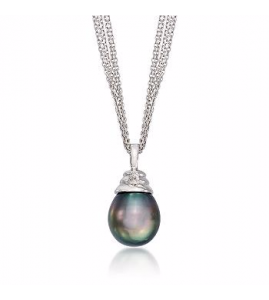The Different Types of Cultured Pearls
Welcome back to the Stewart Kuper Jewelers Blog, where we are continuing this month’s in-depth look into the world of pearls. So far we have provided an introduction to pearls by learning what they are, how they form, and where they come from. We have also looked at the history of pearls and the roles they played in a variety of cultures. Finally, we provided a very brief overview on pearl jewelry and necklaces in particular. Today, we are going to learn about the different types of cultured pearls.
Akoya Pearls
Kokichi Mikimoto began pioneering the cultivation of Akoya pearls sometime in the late 1800s. For decades of painstaking trial-and-error, he struggled to produce a pearl of discernable quality. Finally, in 1905 he produced his first beautiful, round pearl. For the past hundred years, Japanese pearl farmers have refined and perfected Mikimoto’s technique. These days, Akoya pearls are known as some of the most lustrous cultivated pearls available. They range from 2 to 10 millimeters in size and come in the colors of white, cream, blue, rose, and gray. Akoya pearls are cultivated in salt water.
Tahitian Pearls
Often referred to as “black pearls” despite the fact that they are not all black, Tahitian pearls are not actually cultivated in Tahiti! Rather, these unique pearls are cultivated all throughout French Polynesia and the South Pacific Ocean. Tahitian pearls are cultivated using a technique quite similar to the cultivation of Akoya pearls, but they come from a different type of oyster. Tahitian “black” pearls are typically a shade of purple, green, aubergine, gray, or blue. They are cultivated in the Pinctada Maxima or black pearl oyster. They are rarer, and thus often considered more valuable than many other kinds of cultivated pearls.



